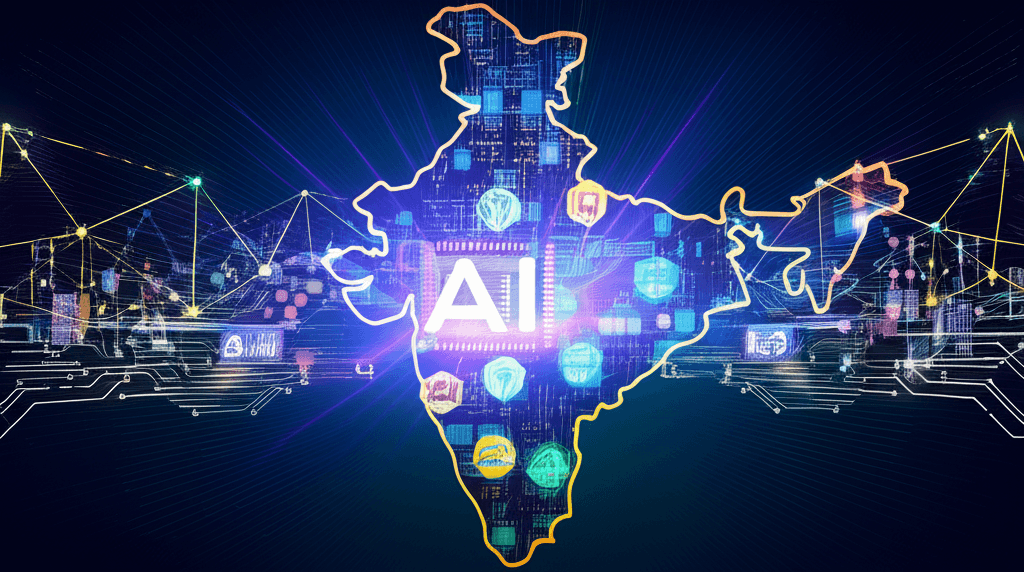India boosts AI power with 14,000 new GPUs, targets global leadership.
The IndiaAI Mission's $1.25 billion boost to compute capacity targets a self-reliant AI future.
May 29, 2025

India is significantly ramping up its artificial intelligence capabilities with the addition of 14,000 Graphics Processing Units (GPUs) to the IndiaAI Mission, bringing the total to over 32,000, as confirmed by Union IT Minister Ashwini Vaishnaw. This strategic procurement is a cornerstone of the nation's broader ambition to become a global AI powerhouse, focusing on strengthening its domestic AI compute capacity. The expansion is specifically aimed at facilitating the training of sophisticated large language models (LLMs) and smaller language models (SLMs), which are the engines behind most generative AI systems currently transforming industries worldwide.[1] This move underscores the government's commitment to democratizing access to AI resources and fostering technological advancement across various sectors.[1]
The IndiaAI Mission, a flagship initiative approved with a substantial budgetary outlay of ₹10,372 crore (approximately USD 1.25 billion) over five years, is designed to build a comprehensive AI ecosystem.[2][3][4][5][6] A significant portion of this funding, around ₹4,563.36 crore (44%), is earmarked for enhancing the nation's compute capacity.[7][8][9] The mission's core objective is to establish a robust, scalable AI computing infrastructure through public-private partnerships.[7][10][4][11][6] This infrastructure will provide crucial resources to academia, startups, researchers, and government agencies, thereby accelerating AI research and development within the country.[8][12] The initial target for the mission was to deploy 10,000 GPUs, a figure that has now been substantially surpassed, indicating accelerated efforts.[7][2][10][13][4][11][6] Some reports indicate an initial empanelment of 18,693 GPUs, with this latest addition further bolstering the available resources.[2][14][15][16]
A key component of this initiative is the recently launched IndiaAI Compute Portal, which will serve as a centralized platform for stakeholders to request and access these vital computing resources.[17][14][18][19][20][16][21][6] Eligible users, including startups and researchers, are expected to receive subsidies of up to 40% on computing costs, significantly lowering the barrier to entry for AI development.[17][8][18][20][22][12][15] This subsidized access is anticipated to make high-performance computing available at rates as low as ₹100 per hour, a considerable reduction compared to global costs.[2][22][23] The GPUs being procured are diverse, with approximately 70% being high-end models like NVIDIA's H100, and the remaining 30% comprising lower-capacity or older-generation GPUs to cater to a wide array of computational needs.[17][8][18] Several companies, including Yotta Data Services, E2E Networks, Tata Communications, and AWS's managed service providers, are involved in supplying these GPUs, with Jio Platforms and CtrlS Datacenters also contributing to the procurement.[17][8][18][22][1] Yotta Data Services is reported to be a major contributor, providing a significant number of GPUs, including thousands of NVIDIA H100 chips.[17][8]
The implications of this GPU expansion for India's AI industry are profound. Enhanced compute capacity is critical for developing indigenous AI solutions tailored to India's unique linguistic diversity and societal needs.[2][14][24][25][26][27] The government's focus extends to fostering the creation of foundational AI models that will be made open-source, promoting wider innovation and ensuring that AI tools are not concentrated in the hands of a few.[24][1][9] This initiative is expected to provide a significant edge to Indian developers and startups, enabling them to build and train complex AI models that can address challenges in sectors like healthcare, agriculture, governance, and education.[13][3][28] Furthermore, the mission aims to attract top AI talent, enable industry collaboration, provide startup risk capital, and promote ethical AI practices.[10][13][3][5] The development of a domestic AI ecosystem is also seen as crucial for data sovereignty and reducing reliance on foreign technology and datasets.[29][25][30][27]
Looking ahead, India is not only focused on acquiring GPUs but also on developing its own indigenous GPU capabilities within the next three to five years, a move that would further bolster technological self-reliance.[2][31][29][22][30] This ambition is part of a larger strategy that includes strengthening semiconductor manufacturing within the country through initiatives like the India Semiconductor Mission.[2][32][29][27] The IndiaAI Mission also encompasses pillars like the IndiaAI Innovation Centre for developing LLMs, the IndiaAI Datasets Platform for providing access to quality data, and IndiaAI FutureSkills for expanding AI education.[10][6] By creating a conducive environment with accessible and affordable advanced computing resources, India is positioning itself to emerge as a significant player in the global AI landscape, driving economic growth and societal progress through cutting-edge technology.[17][33][34][3] The government's proactive approach in building this foundational infrastructure is a clear indication of its long-term vision for a technologically advanced and self-sufficient India.[19]
Sources
[2]
[4]
[5]
[6]
[8]
[10]
[11]
[12]
[13]
[14]
[16]
[17]
[19]
[20]
[26]
[27]
[29]
[30]
[31]
[34]